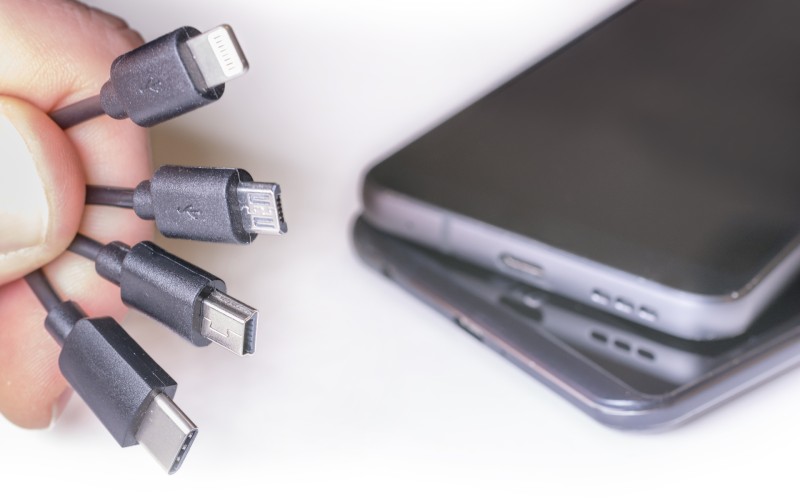
There has been pressure for some time to try and standardise many types of common electronic devices like phone chargers. Last week, the European Commission announced a proposal to standardise smartphone charging cables across the European Union. The main objective is to reduce the estimated 11,000 tonnes of waste generated by discarded and unused charger cables each year. Given that the UK is no longer in the EU following Brexit, it need not follow this or adopt a similar approach but since hardly any smartphone manufacturing takes place in the UK it is likely that manufacturers would sell the same devices in the UK as in the EU.
The EU proposal is to standardise around the USB-C charger model. Many devices use this already but plenty others, notably Apple, don’t. Unsurprisingly, Apple is opposed on the basis standardisation stifles innovation and has also raised concerns that modern iPhone handsets may be too thin to incorporate a USB-C port.
This proposal is significant in two respects. Principally, it would further restrict the autonomy of device manufacturers to adopt to their own specification, at least in relation to charging connections, where interoperability would be required – there is no voluntary element to this proposal. Design, at least of this aspect, will be determined at a regulatory level, rather than being a creative decision by manufacturers based on technical or performance requirements. And, to the extent manufacturers benefit from limited interoperability with other devices and are able to sell premium-priced accessories, that might become a lot more difficult.
Apple, in particular, has regularly changed key features of its handsets. The current Lightning connector, introduced with the iPhone 5, removed backwards compatibility with iPod docks and devices. It removed the standard headphone jack from the iPhone 7. In these cases it will have to balance whether customer irritation is offset by the opportunities to sell upgraded devices or improve device performance.
Presently, this is just a European Commission proposal and there is some way to go before it could become law. Indeed, it is estimated that any laws which are enacted as part of this process will not take effect until 2025. Between now and then, the debate will consider the cost of implementing the new rules; the actual environmental benefits and the merits of the idea overall and the principle of requiring technology to be designed around prescribed outcomes. Whether the proposal survives that to emerge in its current form is difficult to predict.
What this does remind us of, though, is how much more slowly the law changes than technology. It has been possible to charge many types of smartphone wirelessly for some years: Apple introduced this feature for the iPhone in 2017. It’s possible that, by 2025, most phones will be charged in this way and will need far fewer charging cables anyway. Regardless of the design, technical or policy argument against this, the biggest reason not to do this may eventually just be that it’s pointless, because it’s too late.
Liam McMonagle is a specialist Corporate and Commercial Solicitor. We are always delighted to talk without obligation about whether we might meet your needs. Call Liam on 0131 225 8705 or email lmcmonagle@thorntons-law.co.uk
